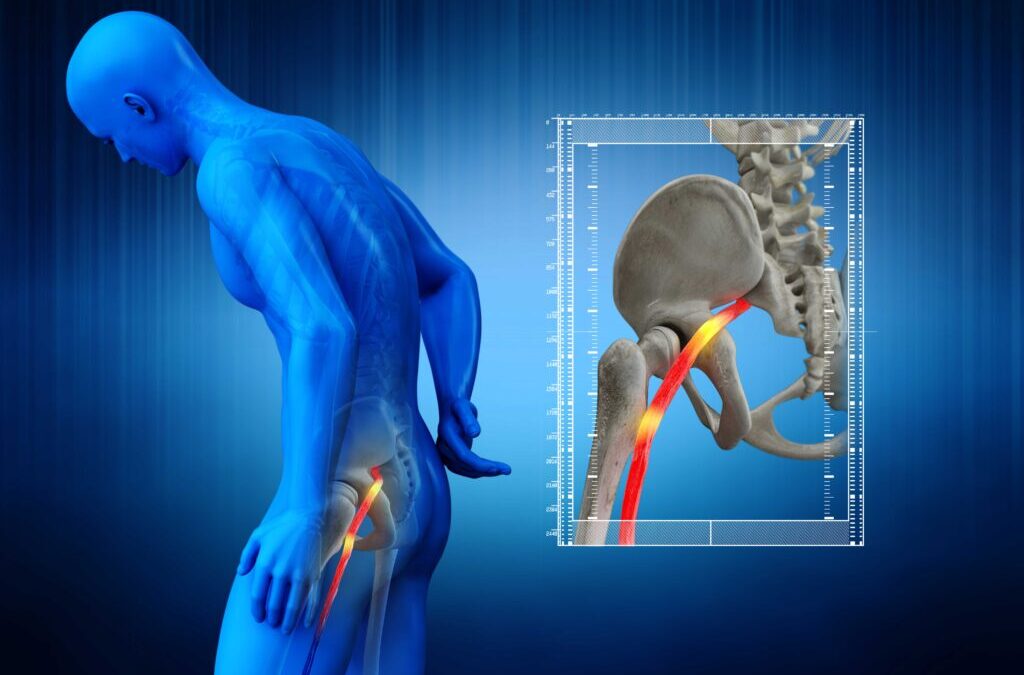
by Revive Chiropractic | Mar 24, 2025 | Blog
dStress affects both mental and physical health, but many people don’t realize the significant impact it has on the spine. Prolonged stress can cause muscle tension, poor posture, and spinal misalignment, leading to pain and discomfort. Fortunately, chiropractic care offers effective solutions for relieving stress-induced spinal issues. This article explores the connection between stress and spinal health and provides actionable tips for relief.
How Stress Affects Your Spine
When the body experiences stress, it responds by tensing muscles and altering posture, which can have negative effects on spinal health. Here’s how stress contributes to spinal problems:
- Muscle Tension – Stress causes muscles, particularly in the neck, shoulders, and lower back, to tighten, leading to stiffness and discomfort.
- Postural Changes – Increased stress often results in poor posture, such as slouching or forward head posture, straining the spine.
- Spinal Misalignment – Chronic stress may lead to subluxations (misalignments) in the spine, increasing pain and limiting mobility.
- Increased Inflammation – Prolonged stress triggers an inflammatory response, exacerbating conditions like back pain, arthritis, and disc issues.
Chiropractic Care for Stress Relief
Chiropractic treatments can help counteract the effects of stress on the spine and promote relaxation. Here’s how chiropractic care supports stress relief:
1. Spinal Adjustments
Chiropractors perform spinal adjustments to correct misalignments caused by stress. These adjustments help restore proper spinal function, reduce pain, and improve nervous system balance.
2. Muscle Relaxation Techniques
Chiropractic care includes muscle therapy and massage therapy to relieve tension in stress-prone areas such as the neck and shoulders.
3. Postural Correction
Proper posture reduces strain on the spine and minimizes stress-related discomfort. Chiropractors provide postural assessments and recommend corrective exercises to maintain spinal alignment.
4. Lifestyle and Ergonomic Recommendations
Chiropractors guide patients on how to reduce stress through:
- Workplace Ergonomics – Adjusting desk and chair positioning to support spinal health.
- Breathing Techniques – Practicing deep breathing to reduce tension in the body.
- Physical Activity – Engaging in low-impact exercise to enhance spinal flexibility and overall well-being.
5. Assisted Lymphatic Therapy
For individuals experiencing chronic stress, assisted lymphatic therapy can help detoxify the body, improve circulation, and enhance relaxation.
Additional Ways to Manage Stress for a Healthy Spine
In addition to chiropractic care, incorporating these daily habits can help reduce stress and maintain spinal health:
- Stretching and Yoga – Helps alleviate muscle tension and improves flexibility.
- Hydration and Nutrition – A balanced diet and proper hydration support spinal health and reduce inflammation.
- Mindfulness and Meditation – Reduces stress responses and promotes relaxation.
- Quality Sleep – Ensures proper spinal alignment and muscle recovery.
Conclusion
Stress and spinal health are closely linked, with prolonged stress contributing to tension, poor posture, and spinal misalignment. Chiropractic care offers an effective way to relieve stress-related discomfort, improve posture, and enhance overall well-being. If stress is impacting your spinal health, consider contacting us for a chiropractic evaluation and personalized care plan.
FAQs
1. Can stress really cause back pain? Yes, stress leads to muscle tension, poor posture, and spinal misalignment, all of which contribute to back pain.
2. How often should I see a chiropractor for stress relief? The frequency depends on individual needs, but regular chiropractic adjustments can help maintain spinal health and stress management.
3. Does massage therapy help relieve stress-related spinal tension? Yes, massage therapy relaxes tight muscles, improves circulation, and reduces stress levels.
4. What are the best exercises to relieve stress-related tension? Gentle stretching, yoga, and low-impact activities like walking or swimming can help reduce muscle tension and improve spinal health.
5. Can poor posture make stress-related back pain worse? Yes, poor posture increases spinal strain, making stress-related discomfort more severe. Chiropractic care can help correct posture for long-term relief.

by Revive Chiropractic | Mar 17, 2025 | Blog
Staying active is essential for overall health, but for individuals with joint or back concerns, high-impact exercises can cause discomfort or even injury. The good news is that you can maintain an active lifestyle while protecting your joints and spine. This guide provides practical tips for staying fit without unnecessary strain.
1. Choose Low-Impact Exercises
Low-impact exercises are gentle on the joints and back while still offering cardiovascular and strength benefits. Some excellent options include:
- Swimming – Provides full-body exercise while reducing pressure on joints.
- Walking – A simple yet effective way to stay active with minimal joint impact.
- Cycling – Supports the joints while improving cardiovascular health.
- Yoga and Pilates – Improves flexibility, core strength, and posture without high-impact movements.
For those experiencing discomfort due to physical activity, chiropractic care for athletes can help optimize performance and prevent injuries.
2. Prioritize Proper Posture
Maintaining good posture during activities helps prevent unnecessary stress on the spine and joints. Key posture tips include:
- Keeping your back straight when sitting and standing.
- Engaging your core muscles during movement.
- Avoiding slouching, especially when using mobile devices or computers.
- Using ergonomic support when sitting for extended periods.
A chiropractor can assess and correct posture-related issues through spinal adjustments and postural guidance.
3. Incorporate Joint-Friendly Strength Training
Strengthening muscles around the joints provides stability and reduces strain. Safe strength-training techniques include:
- Using resistance bands instead of heavy weights.
- Focusing on bodyweight exercises like squats, lunges, and push-ups with proper form.
- Performing slow and controlled movements to avoid joint stress.
If you experience discomfort after exercise, massage therapy can help relax muscles and improve recovery.
4. Warm Up and Cool Down
Warming up before exercise increases blood flow to the muscles and joints, reducing the risk of injury. A proper warm-up should include:
- Dynamic stretching (arm circles, leg swings, and gentle twists).
- Light aerobic activity (walking or marching in place for a few minutes).
Cooling down post-workout with static stretches helps prevent stiffness and enhances flexibility.
5. Use Supportive Footwear and Equipment
The right footwear and exercise equipment can reduce joint strain and provide stability. When choosing gear:
- Opt for shoes with good arch support and cushioning.
- Use shock-absorbing insoles if needed.
- Adjust bike seats, treadmills, and weights to match your body mechanics.
Proper footwear and equipment adjustments prevent injuries and promote safer movement during activities.
6. Listen to Your Body
Pain is a signal from your body that something isn’t right. Avoid pushing through discomfort and:
- Modify or reduce movements that cause pain.
- Take rest days to allow for muscle and joint recovery.
- Seek professional guidance if pain persists.
For ongoing joint and spinal care, assisted lymphatic therapy may help reduce inflammation and support recovery.
Conclusion
An active lifestyle is possible without straining your joints and back. By choosing low-impact exercises, maintaining good posture, strengthening supportive muscles, and listening to your body, you can enjoy movement while minimizing discomfort. If you’re experiencing joint or back pain, consider contacting us for chiropractic care and personalized wellness strategies.
FAQs
1. What are the best exercises for joint pain relief? Swimming, cycling, walking, and yoga are excellent low-impact options that help maintain mobility without stressing the joints.
2. Can bad posture lead to back and joint pain? Yes, poor posture can contribute to joint misalignment, leading to pain and stiffness over time.
3. How can chiropractic care help with joint and back pain? Chiropractic adjustments restore proper spinal alignment, reduce inflammation, and improve mobility, making movement more comfortable.
4. Are there specific stretches to reduce joint stiffness? Yes, gentle stretching, such as hamstring, hip flexor, and shoulder stretches, can improve flexibility and reduce stiffness.
5. How often should I see a chiropractor for joint pain management? The frequency of visits depends on individual needs, but regular chiropractic care can help maintain spinal and joint health for long-term comfort.

by Revive Chiropractic | Mar 10, 2025 | Blog
Your spine plays a crucial role in overall health, supporting movement, posture, and nervous system function. Poor spinal health can lead to chronic pain, reduced mobility, and other complications. Fortunately, incorporating a few simple daily habits can help maintain spinal health and prevent long-term issues. Here are five key habits to keep your spine healthy and strong.
1. Maintain Good Posture
Poor posture places unnecessary strain on the spine, leading to discomfort and misalignments. To maintain proper posture:
- Keep your shoulders back and relaxed.
- Sit with your feet flat on the floor and knees at a 90-degree angle.
- Use an ergonomic chair to support your lower back.
- Avoid slouching while sitting or standing.
Chiropractic care can help correct posture-related misalignments through spinal adjustments and ergonomic recommendations.
2. Stay Active with Daily Movement
Regular exercise strengthens the muscles supporting the spine, improving stability and reducing the risk of injury. Consider incorporating:
- Low-impact exercises like walking, swimming, or cycling.
- Core-strengthening workouts to support spinal alignment.
- Stretching routines to improve flexibility and reduce stiffness.
If you experience back pain due to an active lifestyle, chiropractic care for athletes can help restore function and mobility.
3. Use Proper Lifting Techniques
Improper lifting techniques can strain the back and lead to spinal injuries. To lift safely:
- Bend at the knees instead of the waist.
- Keep the object close to your body.
- Avoid twisting while lifting.
- Engage your core muscles for added support.
If you’ve experienced a work-related back injury, a chiropractor can assist with recovery and recommend preventative strategies.
4. Invest in Quality Sleep Support
A supportive sleep environment is essential for spinal health. Improve your sleep posture by:
- Using a firm mattress that aligns the spine.
- Sleeping on your back or side with a pillow supporting your neck.
- Avoiding stomach sleeping, which strains the lower back.
For additional spinal support, massage therapy can alleviate muscle tension and promote relaxation.
5. Stay Hydrated and Maintain a Healthy Diet
Hydration and nutrition play a significant role in spinal health. To keep your spine in top shape:
- Drink plenty of water to keep spinal discs hydrated and flexible.
- Eat foods rich in calcium and vitamin D for strong bones.
- Maintain a balanced diet to support overall musculoskeletal health.
A well-rounded approach to spinal care, including proper nutrition and assisted lymphatic therapy, can enhance overall wellness and reduce inflammation.
Conclusion
Taking care of your spine doesn’t have to be complicated. By practicing good posture, staying active, lifting properly, optimizing sleep, and maintaining hydration and nutrition, you can keep your spine healthy for years to come. If you’re experiencing discomfort or want to take a proactive approach to spinal care, consider contacting us for a chiropractic consultation.
FAQs
1. How often should I see a chiropractor for spinal health? It depends on individual needs, but regular chiropractic visits help maintain spinal alignment and prevent discomfort.
2. Can bad posture cause long-term spinal issues? Yes, prolonged poor posture can lead to spinal misalignments, muscle imbalances, and chronic pain.
3. What is the best sleeping position for spine health? Sleeping on your back or side with proper pillow support helps maintain spinal alignment.
4. How does hydration affect spinal health? Water keeps spinal discs hydrated, preventing stiffness and promoting flexibility.
5. Can chiropractic care help with spinal injuries? Yes, chiropractic care can aid in spinal injury recovery by improving alignment, reducing pain, and restoring function.

by Revive Chiropractic | Mar 3, 2025 | Blog
Good posture is essential for overall health, affecting everything from spinal alignment to breathing and digestion. Poor posture can lead to chronic pain, reduced mobility, and an increased risk of injury. Chiropractic care plays a crucial role in correcting postural imbalances, relieving discomfort, and helping patients maintain a strong and well-aligned spine. In this article, we discuss the importance of good posture and how chiropractic care can help improve it.
Why Good Posture Matters
Maintaining proper posture has numerous health benefits, including:
- Reduced Back and Neck Pain – Slouching or hunching over places excess strain on the spine and muscles, leading to discomfort.
- Improved Breathing and Circulation – An upright posture allows the lungs to expand fully and promotes better blood flow.
- Enhanced Digestion – Sitting or standing with good posture helps prevent compression of the digestive organs, aiding in better digestion.
- Better Joint Health – Proper posture reduces wear and tear on joints, minimizing the risk of arthritis and other joint-related issues.
- Increased Energy Levels – Poor posture can cause fatigue due to inefficient muscle use, whereas good posture helps maintain energy throughout the day.
Common Causes of Poor Posture
Many people develop poor posture due to daily habits and lifestyle factors, such as:
- Prolonged Sitting – Sitting for extended periods, especially with improper ergonomic support, can lead to slouching.
- Screen Time and Tech Neck – Looking down at screens for long hours places excessive stress on the neck and upper back.
- Lack of Core Strength – Weak core muscles contribute to postural misalignment and increased strain on the spine.
- Improper Sleeping Position – Using the wrong pillow or sleeping in a poor position can lead to spinal misalignment.
- Injury or Muscle Imbalances – Past injuries and muscular imbalances can affect posture over time.
How Chiropractic Care Helps Improve Posture
Chiropractors specialize in spinal health and posture correction through targeted treatments. Here are some key ways chiropractic care can help:
1. Spinal Adjustments
Chiropractic adjustments realign the spine, reducing misalignments that contribute to poor posture. These adjustments help restore proper function and relieve pain caused by postural strain.
2. Postural Assessments
Chiropractors assess a patient’s posture to identify imbalances and areas of concern. They provide personalized recommendations for posture correction and spinal alignment.
3. Corrective Exercises
Specific exercises help strengthen the muscles that support good posture, particularly the core, back, and neck muscles. Chiropractors guide patients through customized exercise routines to improve alignment and stability.
4. Ergonomic Guidance
Workplace and home ergonomics play a significant role in posture. Chiropractors provide practical tips on setting up an ergonomic workspace, choosing the right chair, and adjusting screen heights to promote better posture.
5. Assisted Stretching and Soft Tissue Therapy
Chiropractic care includes stretching techniques and massage therapy to release tight muscles that contribute to poor posture. Soft tissue therapy helps restore flexibility and mobility in the spine and surrounding muscles.
6. Lifestyle and Habit Adjustments
Chiropractors educate patients on maintaining good posture throughout daily activities, whether sitting, standing, or sleeping. Simple changes, such as adjusting sleeping positions or taking breaks from screen time, can have a significant impact.
Chiropractic Care and Special Populations
Chiropractic care is beneficial for individuals of all ages, including:
- Athletes – Proper posture enhances athletic performance and prevents injuries.
- Pregnant Women – Pregnancy chiropractic adjustments help relieve back strain caused by postural changes during pregnancy.
- Children and Teens – Pediatric chiropractic care ensures proper spinal development and posture correction during growth.
- Workers in Sedentary Jobs – Chiropractors provide posture correction strategies for individuals spending long hours at desks.
When to See a Chiropractor for Posture Correction
If you experience any of the following symptoms, visiting a chiropractor can help:
- Chronic back, neck, or shoulder pain
- Headaches or migraines linked to poor posture
- Numbness or tingling in the arms or legs
- Difficulty maintaining good posture throughout the day
- Uneven shoulders or noticeable spinal misalignment
Conclusion
Good posture is vital for maintaining overall health and preventing discomfort. Chiropractic care provides effective solutions for posture correction, from spinal adjustments to personalized exercise plans and ergonomic recommendations. If you’re looking to improve your posture and relieve associated pain, consider contacting us for a consultation and personalized chiropractic care plan.
FAQs
1. How long does it take to correct posture with chiropractic care? The timeline varies based on individual needs. Some patients see improvement within a few weeks, while others require ongoing care for lasting results.
2. Can poor posture cause long-term health problems? Yes, untreated poor posture can lead to chronic pain, joint degeneration, and reduced mobility over time.
3. Does chiropractic care help with tech neck? Yes, chiropractic adjustments, stretching, and ergonomic guidance can relieve tension and correct posture issues caused by prolonged screen use.
4. What are some daily habits to improve posture? Practicing good ergonomics, taking breaks from sitting, engaging in posture-strengthening exercises, and using supportive pillows can help maintain proper posture.
5. Is chiropractic care safe for posture correction? Yes, chiropractic care is a safe and effective way to realign the spine and improve posture naturally.

by Revive Chiropractic | Feb 23, 2025 | Blog
Sciatica is a common condition that causes pain radiating from the lower back down the legs. It can be debilitating, limiting mobility and affecting daily life. Chiropractic care offers a natural, non-invasive solution to relieve sciatica pain, improve function, and prevent future flare-ups. In this guide, we explore step-by-step chiropractic techniques to ease sciatica discomfort and restore spinal health.
Understanding Sciatica: Causes and Symptoms
Sciatica occurs when the sciatic nerve, the largest nerve in the body, becomes compressed or irritated. Common causes include:
- Herniated Discs – A slipped or bulging disc can press on the sciatic nerve.
- Spinal Stenosis – Narrowing of the spinal canal can put pressure on the nerve roots.
- Piriformis Syndrome – Tightening of the piriformis muscle can irritate the sciatic nerve.
- Injuries and Trauma – Accidents, falls, or repetitive strain can trigger sciatic pain.
- Poor Posture and Sedentary Lifestyle – Sitting for prolonged periods can increase the risk of sciatica.
Step-by-Step Chiropractic Techniques for Sciatica Relief
Chiropractors use specialized techniques to address the root cause of sciatica and provide long-term relief. Here’s a step-by-step breakdown:
1. Spinal Adjustments
Chiropractors perform targeted spinal manipulations to realign the vertebrae, reduce nerve pressure, and improve overall spinal function. Adjustments help restore proper nerve flow and alleviate pain.
2. Flexion-Distraction Therapy
This gentle, hands-on technique uses a specialized chiropractic table to stretch the spine and relieve pressure on the sciatic nerve. It is especially effective for patients with herniated discs.
3. Myofascial Release
Chiropractors use deep tissue techniques to release tension in the lower back, glutes, and legs, reducing nerve irritation and muscle tightness.
4. Postural Correction
Improving posture is crucial for sciatica relief. Chiropractors assess spinal alignment and recommend corrective exercises to strengthen core muscles and maintain proper posture.
5. Assisted Stretching and Exercise Therapy
Stretching exercises help improve flexibility, reduce inflammation, and prevent sciatic nerve compression. Chiropractors provide customized stretching routines to support long-term relief.
6. Lifestyle and Ergonomic Adjustments
Chiropractors guide patients on proper ergonomics at work and home to prevent sciatica recurrence. Simple changes, such as maintaining a neutral spine position and using supportive seating, can make a significant difference.
Benefits of Chiropractic Care for Sciatica
- Non-Invasive Treatment – Avoids surgery and prescription medications.
- Pain Reduction – Alleviates discomfort naturally.
- Improved Mobility – Enhances movement and flexibility.
- Spinal Health Support – Addresses the root cause for long-term relief.
- Prevention of Recurrence – Strengthens the body to avoid future flare-ups.
When to Seek Chiropractic Care for Sciatica
If you experience persistent sciatic pain, numbness, or weakness in the legs, consulting a chiropractor can help. Seek professional care if your symptoms:
- Last longer than a few weeks
- Worsen with movement or daily activities
- Affect sleep or quality of life
- Are accompanied by loss of bladder or bowel control (seek immediate medical attention)
Conclusion
Sciatica can be painful and disruptive, but chiropractic care offers a natural and effective way to find relief. By addressing the underlying cause and incorporating targeted treatments, chiropractors help patients regain mobility, reduce pain, and improve their overall well-being. If you’re struggling with sciatica, consider contacting us to schedule a chiropractic consultation and start your journey toward lasting relief.
FAQs
1. How many chiropractic sessions are needed for sciatica relief? The number of sessions depends on the severity of the condition. Some patients experience relief in a few visits, while chronic cases may require ongoing care.
2. Is chiropractic care safe for sciatica? Yes, chiropractic care is a safe, drug-free approach that effectively addresses sciatica pain by reducing nerve pressure and improving spinal alignment.
3. Can chiropractic adjustments make sciatica worse? When performed by a licensed chiropractor, adjustments are safe and effective. However, improper techniques or self-adjustments may worsen symptoms.
4. What can I do at home to support chiropractic treatment for sciatica? Practicing good posture, staying active, performing recommended stretches, and using ergonomic seating can help maintain the benefits of chiropractic care.
5. Does insurance cover chiropractic treatment for sciatica? Many insurance plans cover chiropractic care, but coverage varies. It’s best to check with your provider for details on your specific plan.






Recent Comments